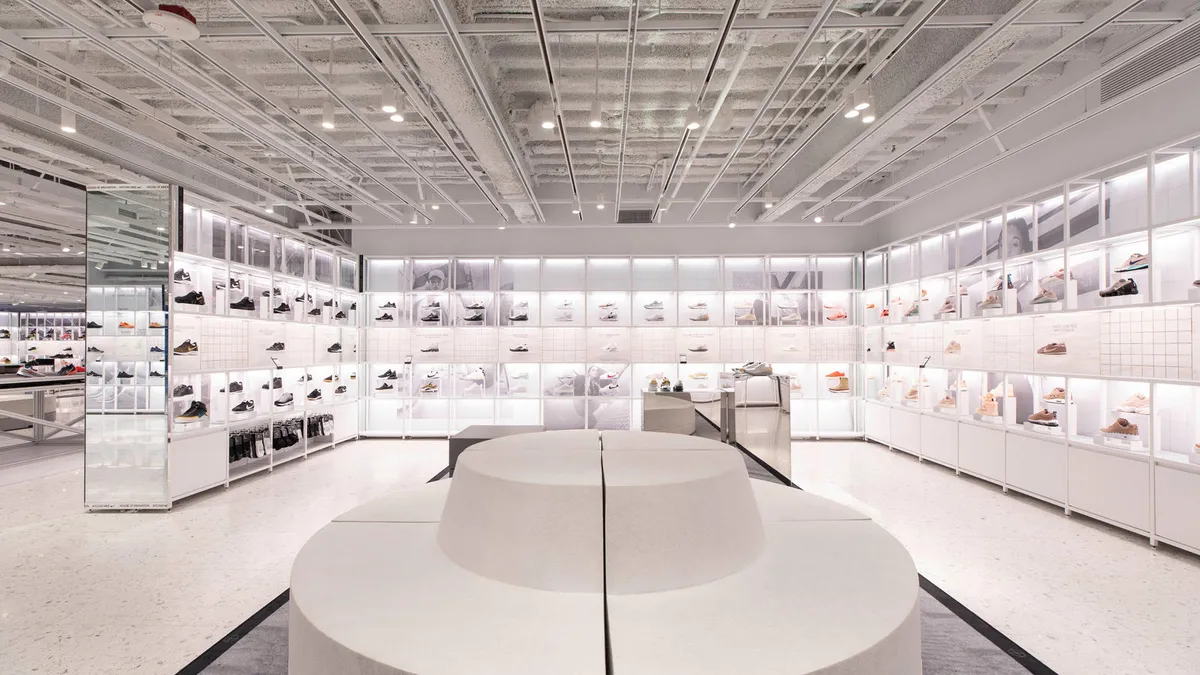Dive Brief:
- Nike recently opened a warehouse in the Los Angeles area that will use predictive modeling to gauge consumer demand and help ensure the inventory customers want is available for one- or two-day shipping, Chief Financial Officer Matt Friend said on the company's Tuesday earnings call.
- Nike will leverage its 2019 acquisition of demand-sensing technology company Celect to determine what inventory should be positioned in the warehouse to optimize delivery speed and fulfillment cost, Friend said.
- Nike's digital sales increased 82% during the quarter that ended Aug. 31, and executives said the company would continue to build out its direct-to-consumer channels while trimming wholesale contracts, because the former is already more profitable and executives expect the gap to widen over time. "We obviously believe that scale for our digital business is going to drive significant financial benefits as we continue to grow the size of that business and leverage the capability that we continue to develop," Friend said.
Dive Insight:
The work of positioning inventory across Nike's fulfillment network is made more sensitive, due to the company's desire to keep overall inventory low.
Nike ended the most recent quarter with inventory up 15% YoY but down 9% from the quarter prior. Last quarter, executives said they were canceling roughly 30% of pre-pandemic orders from suppliers, but they reversed some of those cancellations in the most recent quarter when demand returned stronger than expected.
In June, Friend referred to the Los Angeles location as a "new regional service center" that will help to "forward deploy digital inventory."
It's exactly those kinds of demand surprises that Nike's Celect technology seeks to avoid, though the pandemic has proven to be a particularly stubborn wrinkle for the demand planning discipline. The company's focus on normalizing supply and demand is "relentless," Friend said on the Tuesday call.
"And while we will need to continue investments to expand digital fulfillment capacity, we can improve operational efficiency through predictive modeling tools, data-driven member personalization and inventory staging," he said. RFID, now covering 100% of footwear and 75% of apparel in factory stores, will help to maximize inventory visibility and efficiency, said Friend.
The company maintains that direct-to-consumer distribution is the future for Nike, which is reflected in its warehousing investments. Friend said the company is scaling robotics and automation in its operations and has so far cut order cycle times by 50% in some cases.
















